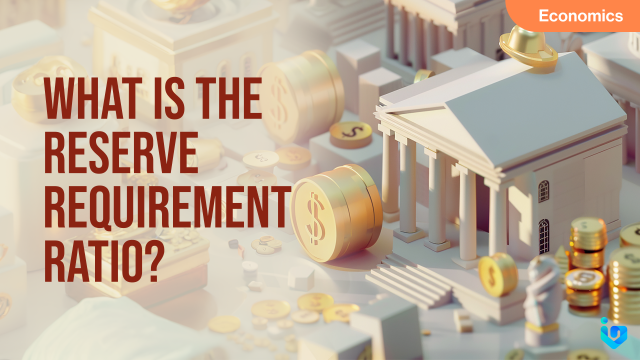The Reserve Requirement Ratio (RRR) is a crucial aspect of banking and monetary policy. It refers to the percentage of deposits that commercial banks must hold in reserve and not lend out. This reserve can be held either as cash in the bank’s vault or as deposits with the central bank. The RRR is a tool used by central banks to control the money supply, manage liquidity, and ensure the stability of the financial system.
Historical Context of the Reserve Requirement Ratio
The concept of reserve requirements has been around for centuries. Historically, banks were required to keep a certain amount of their deposits as reserves to ensure they could meet withdrawal demands. This practice became formalized with the establishment of central banks. In the United States, the Federal Reserve was created in 1913, and one of its primary functions was to set reserve requirements for banks. Over time, the RRR has evolved as a key instrument in monetary policy.
How the Reserve Requirement Ratio Works
The RRR is set by the central bank and varies from country to country. It is expressed as a percentage of a bank’s total deposits. For example, if the RRR is 10%, a bank with $1 billion in deposits must hold $100 million in reserve. The remaining $900 million can be used for lending and other investments. By adjusting the RRR, central banks can influence the amount of money available for lending, which in turn affects economic activity.
The Role of the Reserve Requirement Ratio in Monetary Policy
Central banks use the RRR as a tool to control the money supply and manage economic stability. When the central bank wants to increase the money supply, it can lower the RRR. This allows banks to lend more money, which can stimulate economic growth. Conversely, when the central bank wants to reduce the money supply, it can raise the RRR. This restricts the amount of money banks can lend, which can help control inflation.
Impact of the Reserve Requirement Ratio on Banks
The RRR has a significant impact on the operations of commercial banks. A higher RRR means that banks must hold more money in reserve, reducing the amount available for lending. This can lead to higher interest rates as banks try to maintain their profit margins. On the other hand, a lower RRR increases the amount of money banks can lend, which can lead to lower interest rates and increased borrowing.
Reserve Requirement Ratio and Financial Stability
One of the primary purposes of the RRR is to ensure the stability of the financial system. By requiring banks to hold a certain percentage of their deposits in reserve, central banks can reduce the risk of bank runs. A bank run occurs when a large number of customers withdraw their deposits simultaneously, fearing that the bank will become insolvent. With adequate reserves, banks are better equipped to meet withdrawal demands and maintain customer confidence.
Changes in the Reserve Requirement Ratio
The RRR is not a static figure and can be adjusted by the central bank in response to changing economic conditions. For example, during the financial crisis of 2008, many central banks lowered their reserve requirements to increase liquidity in the banking system. Similarly, during the COVID-19 pandemic, the Federal Reserve reduced the reserve requirement ratios to zero percent to ensure that banks had enough liquidity to support the economy.
Reserve Requirement Ratio in Different Countries
The RRR varies widely across different countries, reflecting the unique economic conditions and monetary policies of each nation. In some countries, the RRR is relatively high, while in others, it is quite low. For example, in China, the RRR has historically been higher than in many Western countries, reflecting the government’s focus on controlling inflation and managing economic growth. In contrast, the United States has had periods where the RRR was set at zero, as seen during the COVID-19 pandemic.
Criticisms and Limitations of the Reserve Requirement Ratio
While the RRR is an important tool for central banks, it is not without its criticisms and limitations. Some economists argue that reserve requirements can be too blunt an instrument for managing the money supply. They suggest that other tools, such as open market operations and interest rate adjustments, can be more effective. Additionally, the RRR can place a significant burden on smaller banks, which may struggle to meet the reserve requirements without reducing their lending activities.
The Future of the Reserve Requirement Ratio
The role of the RRR in monetary policy continues to evolve. As central banks develop new tools and strategies for managing the economy, the importance of reserve requirements may change. However, the fundamental principle of ensuring that banks have enough reserves to meet withdrawal demands and maintain financial stability is likely to remain a cornerstone of banking regulation.
Conclusion
The Reserve Requirement Ratio is a vital component of the banking system and monetary policy. By requiring banks to hold a certain percentage of their deposits in reserve, central banks can control the money supply, manage liquidity, and ensure financial stability. While the RRR has its limitations and criticisms, it remains an essential tool for central banks around the world. Understanding the RRR and its impact on the economy is crucial for anyone interested in finance and banking.

